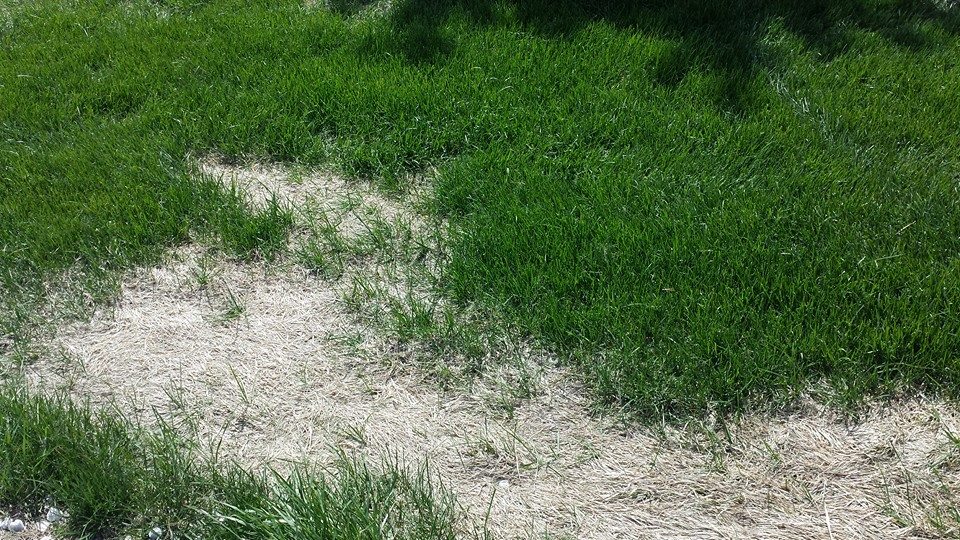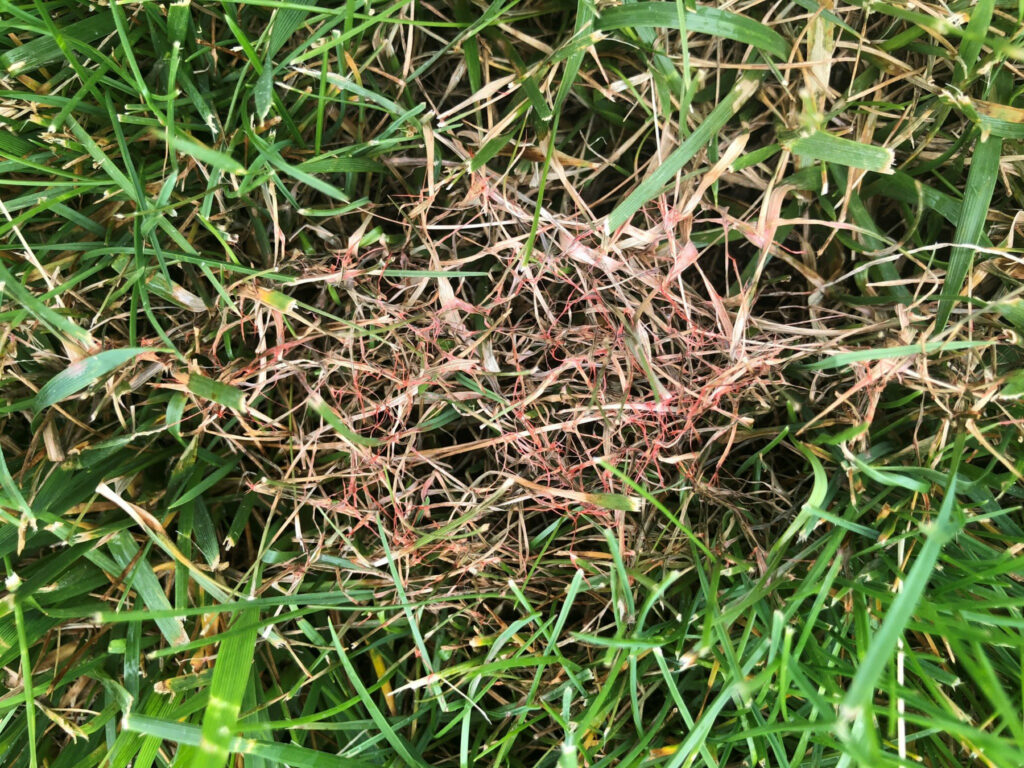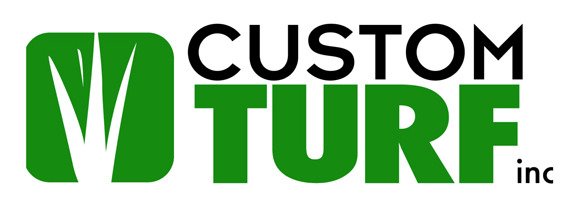SUMMER HEAT, DROUGHT AND DISEASE CAN BE DAMAGING
In the summer, if we have extreme heat and drought, these could be ideal conditions for diseases. Thus, lawns need occasional rains or irrigation to avoid stressful periods. High temperatures are tough on turf. Combine the heat with long stretches of little or no rainfall, and lawns will start showing signs of heat and drought stress in no time.
If your grass is yellowish-green in color, or if your footprints remain in the turf after you've walked on it, these are sure signs that your lawn can use some help. In severe cases, turf can go into a dormant state with the entire lawn turning brown. This is normal.

When your 14 year old daughter comments on how beautiful the yard looks, you KNOW it is BEAUTIFUL!! Thank you, Custom Turf, for the amazing service! You show up and take care of what our yard needs. We don’t have to do a thing! Thank you!!!
Denise
Water Properly To Avoid Stress
The best way to prevent heat and drought stress is to give your lawn plenty of water. As a general rule, your turf needs from 1" of water per week from rainfall or sprinkling. When irrigating, it's important to let water soak into a depth of 6" so that enough moisture reaches the roots.
Less frequent, deeper watering is more beneficial than frequent, shallow irrigating. Also, it’s best to water early morning when less water will evaporate in the sun’s heat and to piggyback with the morning dew.

Common Lawn Diseases
The two main diseases giving your lawn problems during late Spring/Summer are Red Thread and Dollar Spot. Both are more likely to occur during excess wet or humid conditions with damage that can turn a beautiful lawn bad, in just a short period of time. In most cases, minor disease will grow out with a change in the weather. Fungicides are not part of our regular treatment program, but are necessary if the disease activity is severe. Fungicides are expensive products and we prefer their use, only when necessary.
Brown Patch
Brown Patch appears as brownish-yellow “patches” (irregular circles) that can spread. They might start around six inches in diameter but can grow to be several feet. This disease begins to grow fastest when temperatures are higher than 80 degrees with high humidity.
Red Thread
A pink / red circular pattern disease in the turf. This disease measures about 4” across and is a result of the abundance of moisture. Typically, this disease will go away on its own.
Dollar Spot
A common disease caused with lots of rainfall or excessive irrigation. Typically, the size of a dollar coin. If you feel you have a problem with your lawn, give us a call and we can help diagnose the problem, and provide recommendations.
Rust
Rust is a fungal disease that occurs on turf grasses when growth is slowed. This usually happens in late summer or early fall, during periods of dry weather or when the grass is low on nitrogen. Lawn rust can weaken the vigor of the grass and open it to other diseases and turf problems. Grass rust fungus spreads easily through its spores but rust fungus in lawns usually does not require fungicides.
Identification of Rust Fungus:
The blades will be coated with orange-red to yellowish brown dust or spores. The lawn rust begins with yellowing leaf blades and small yellowish spots which mature to orange, red, or brown coloring. The spores can be rubbed off the grass blades with a finger, or even noticeable on white shoes that become orangish. Overall, patches of the grass will become thin and weak. Grass rust problems are obvious due to the large amount of space the plant covers. The formation of the spores often occurs when there are cool nights with heavy dew and frequent rainfall. Warm, cloudy, humid conditions followed by bright hot sun also favor the formation of the spores. Basically, anytime the grass is not allowed to dry out after a period of six to eight hours, rust on grass begins to form. Grass rust problems also appear more frequently when thatch in lawns is too thick or mowing is infrequent.
